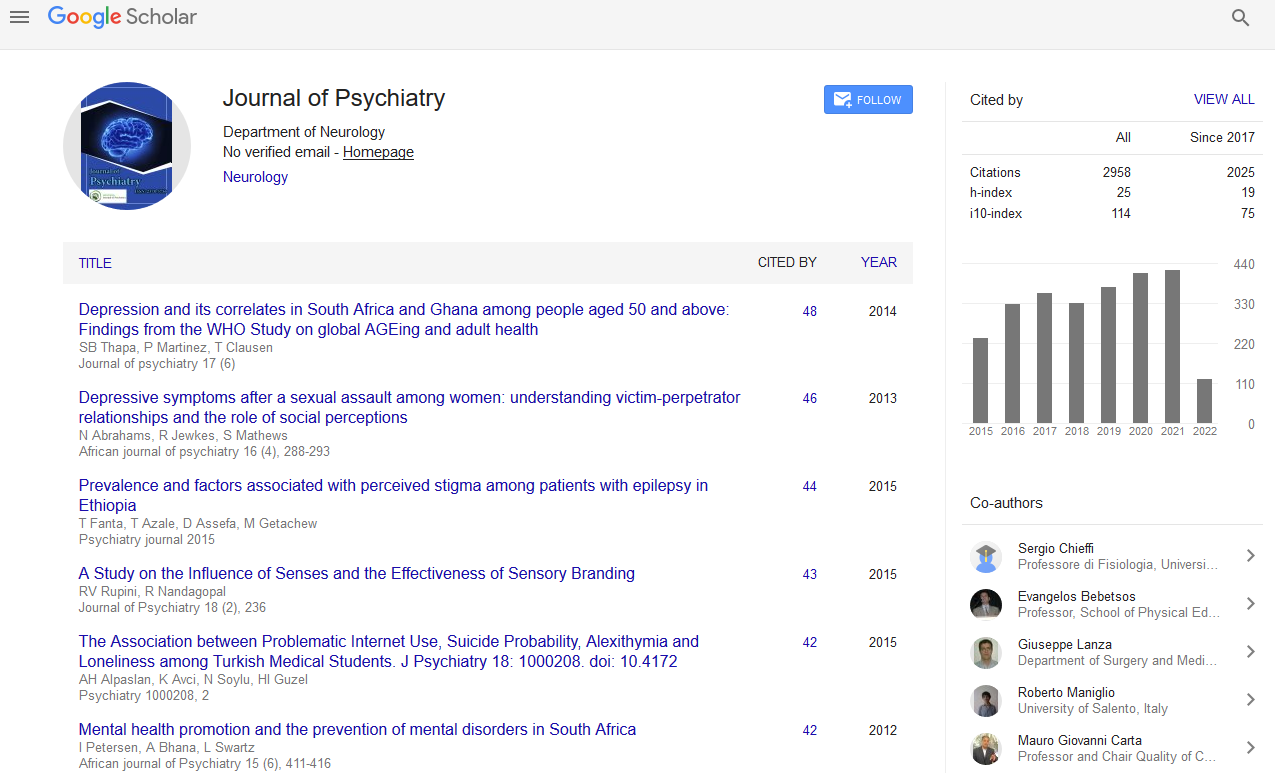PMC/PubMed Indexed Articles
Indexed In
- RefSeek
- Hamdard University
- EBSCO A-Z
- OCLC- WorldCat
- SWB online catalog
- Publons
- International committee of medical journals editors (ICMJE)
- Geneva Foundation for Medical Education and Research
Useful Links
Share This Page
Open Access Journals
- Agri and Aquaculture
- Biochemistry
- Bioinformatics & Systems Biology
- Business & Management
- Chemistry
- Clinical Sciences
- Engineering
- Food & Nutrition
- General Science
- Genetics & Molecular Biology
- Immunology & Microbiology
- Medical Sciences
- Neuroscience & Psychology
- Nursing & Health Care
- Pharmaceutical Sciences
The neurosequential approach: Applying principles of neurodevelopment to clinical work with traumatized childrenFelicia Johnson
19th Global Congress on Pediatricians & Child Psychiatry
July 12-13, 2017 Chicago, USA
Roland Verdouw
Netherlands
Posters & Accepted Abstracts: J Psychiatry
Abstract:
Human brain development unfolds through a complex interaction with genes and experiences but always in context of relationships. We are social-interdependent-creatures. From the day we are born our survival, procreation and protecting our offspring depends on it. The universal principles of brain development can be used to understand how these experiences mold a child�??s brain and what is needed to help children grow into loving, emphatic and healthy adults. Secondly they can also be used to look back into a child�??s history and-as an archeologist-understand how the past has influenced the current behavioral landscape. The brain is a historical organ that makes an internal representation of the external world. It is shaped and built by experiences-good and bad. D.W. Winnicot said that, fundamentally, two things can go wrong in childhood; one is when things happen that shouldn't happen and then things that should happen but don't. Most children show "normal" reactions, to "abnormal" situations. Their behavior is a result of their experiences-language as the most obvious one but true for all our skills and practices. A model is a heuristic to better understand the complexity of the world around us. With our conventional medical model�??the DSM�??it is difficult to capture this complexity and it disregards the developmental and neurobiological perspective on behavior. Our current knowledge of brain development and the clinical implications makes it our obligation to see if other models can help better understand these traumatized children with complex behavior. The Neurosequential Model�??developed by dr. B.D. Perry and his team from the ChildTrauma Academy�??has a more developmentally informed, biologically respectful approach to clinical work. It is therefore a useful alternative model to complement and restructure therapeutic interventions in working with traumatized children.
Biography :
Email: roverdouw@gmail.com


